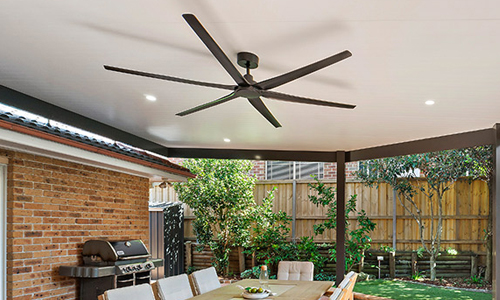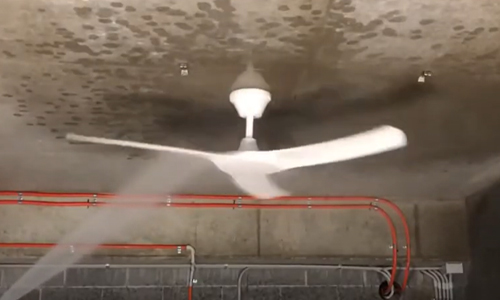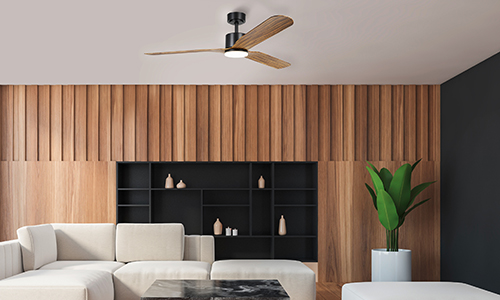How Many Blades? The Magic Number (and what are they made of?)
How Many Blades? The Magic Number (and what are they made of?)
Ideally, you want a fan that generates the necessary air flow for the space you’re installing it in, and even better if it operates quietly and cost efficiently. Not to forget that we also want appliances for our home or office/workspace to look nice, to fit the surrounding aesthetic, and the job at hand becomes all about finding that balance between form and function. At The Fan & Light Shop, we have one of Australia’s largest range of fans, and an expert team of dedicated professionals to advise you about which fan best suits your needs, and your budget.
One of the key questions that we are often asked is about the number of fan blades and how that affects a fan’s performance. Most people are surprised to discover that given the ongoing innovations in technology and design, the difference between fans with fewer or more blades are extremely subtle. It often comes down to personal preference, the reliability of the make and model, customer assurance with manufacturer’s warranties, and in which room and for what purpose the fan is intended for. That’s where our team can help you to decide. For some more information, you can read our Choosing the right ceiling fan blog, but here’s some general information about the number of fan blades and a bit of discussion about those subtle differences.
- 3 Blade Ceiling Fans: A fan with fewer blades generally has less drag on the motor, which means it can go a little faster and move air more efficiently. 3 blade ceiling fans are in general a cost-effective choice. Though they can run at high speeds, they use less energy to rotate because they have fewer components, making them lighter and cost efficient to run. Keep in mind however that some three blade fans can be noisier, which makes them less ideal for bedrooms, but because they can run at high speeds, they do provide a solid wind chill effect which can help on those sizzling and hard-to-sleep hot summer nights.
- 4 Blade Ceiling Fans: These are quieter than those with fewer blades. 4 and 5 blade ceiling fans are ideal to in rooms with an air conditioner, as they help to move the cool air around. They also tend to have a more appealing aesthetic but are unlikely to circulate air as quickly as a fan with 3 blades.
- 5 Blade Ceiling Fans: This option generally comes down to how the fan looks, and personal preference. It is worth noting that more blades put a higher strain on the motor, but it’s hardly a deal-breaker as most reputable brands come with solid warranties and are still extremely cost efficient to run. If you want to move air effectively, but want to minimize noise, a ceiling fan with five blades might be the way to go.
Some of the different materials fan blades are made from, are:
- Plastic Blades: Typically crafted from materials like ABS polymer, plastic blades come in a variety of shapes as they are easily moulded and are suitable for both indoor and outdoor applications. Plastic blades are typically very light, which means the motor must do less work and makes them that little bit quieter. They are easy to clean, and if budget is a consideration, a ceiling fan with plastic blades are often easy on the pocket.
- Timber Blades: Timber blades are stronger than plastic, and when used in the appropriate settings, more durable. Timber blades are often quieter than metal blades but are not always recommended for use in extremely hot climates. There is no getting around however that timber blades often have a more premium aesthetic and can really provide a lift to the décor of your home.
- Metal Blades: Conversely, we recommend metal blades in extremely hot climates. Though they tend to be more expensive at point of sale, they are incredibly easy to clean, look stunning, and most importantly, are incredibly durable and can last for years.





